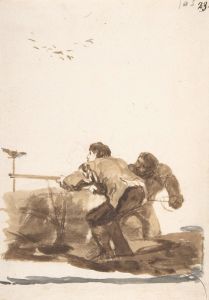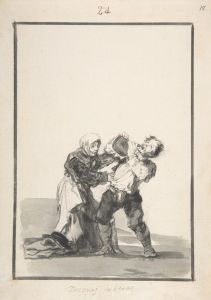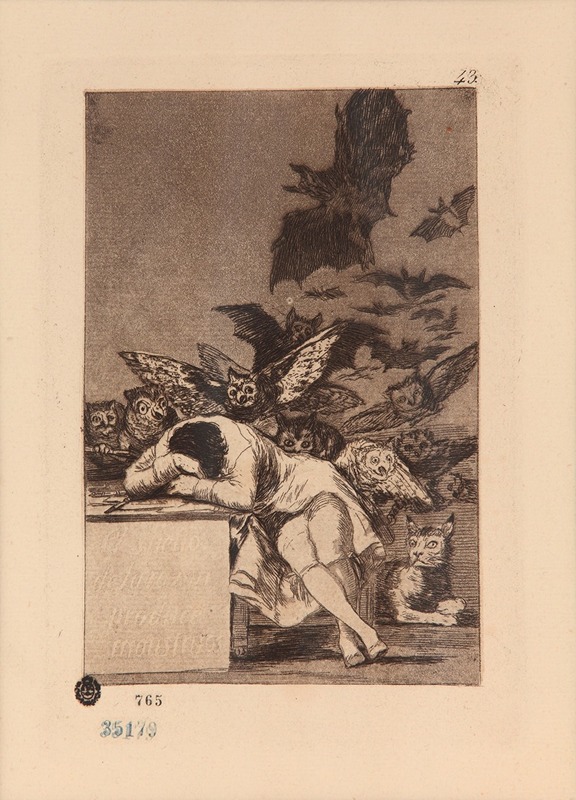
El sueño de la razon produce moustruos
A hand-painted replica of Francisco de Goya’s masterpiece El sueño de la razon produce moustruos, meticulously crafted by professional artists to capture the true essence of the original. Each piece is created with museum-quality canvas and rare mineral pigments, carefully painted by experienced artists with delicate brushstrokes and rich, layered colors to perfectly recreate the texture of the original artwork. Unlike machine-printed reproductions, this hand-painted version brings the painting to life, infused with the artist’s emotions and skill in every stroke. Whether for personal collection or home decoration, it instantly elevates the artistic atmosphere of any space.
"El sueño de la razón produce monstruos" ("The Sleep of Reason Produces Monsters") is an etching and aquatint created by Spanish artist Francisco de Goya between 1797 and 1799. It is part of his celebrated series of 80 prints titled Los Caprichos, which was first published in 1799. The series is widely regarded as a critique of the social, political, and religious issues of late 18th-century Spain.
The artwork depicts a man, often interpreted as Goya himself, slumped over a desk, seemingly asleep. Surrounding him are various fantastical creatures, including owls, bats, and a lynx, which emerge from the darkness. The inscription on the lower part of the print reads, "El sueño de la razón produce monstruos," which can be translated as "The sleep of reason produces monsters." This phrase is often understood to suggest that when reason is dormant or absent, irrationality and chaos prevail.
The imagery in the print has been interpreted as a reflection of Goya's concerns about the Enlightenment ideals of reason and progress being overshadowed by superstition, ignorance, and irrationality. The owls and bats are commonly associated with folly and fear, while the lynx, positioned in the lower right corner, is thought to symbolize vigilance and clarity. These elements together create a complex visual metaphor for the tension between reason and unreason.
Goya's Los Caprichos series was groundbreaking for its time, as it combined biting social commentary with innovative artistic techniques. The series was created during a period of significant personal and political turmoil for Goya. He had recently suffered a severe illness that left him deaf, and Spain was undergoing political instability under the rule of King Charles IV. These factors likely influenced the dark and introspective tone of the series.
"El sueño de la razón produce monstruos" is considered one of the most iconic images in Los Caprichos and is often studied as a key example of Goya's ability to blend artistic innovation with social critique. The print remains a powerful symbol of the dangers of abandoning reason and the enduring relevance of Goya's work in addressing universal human concerns.





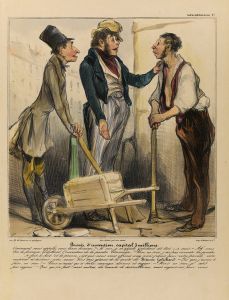

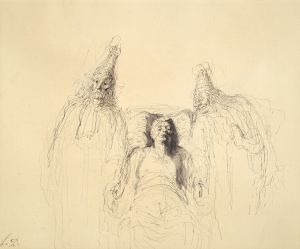
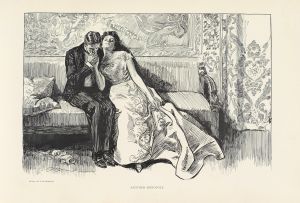
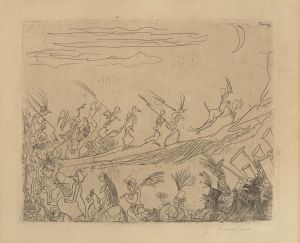

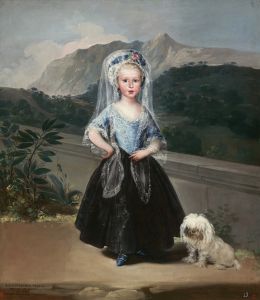
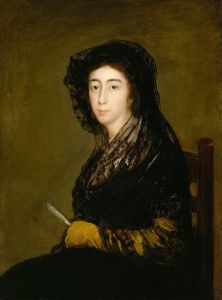

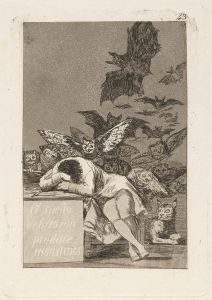
![It Is Amazing-And We Were Made by God [Furious Folly]](/imgs/264618/s/francisco-de-goya-it-is-amazingand-we-were-made-by-god-furious-folly-a15fa352.jpg)

